The latest guest post on 501 Places is by Jerry Kubica. Jerry was born in Poland but during his early childhood had to survive the horrors of the war and deportation before arriving and settling in England.
He set up the Our Roots Trust project to explore the roots of those imprisoned and killed in Belarus, Kazakhstan, Russia, Ukraine and Poland; and to help those left behind, who still serve as a living legacy to the brutality of Stalin’s regime.
The post is an extract from Jerry’s visit to Kazakhstan; please take the time to visit the link to Our Roots Trust at the end of the post to read more of his story.
An advertisement in the Sunday Times Appointments may read something like this:
Marketing Executive – Aralsk, Kazakhstan
The job: A high-flier is sought to resuscitate a small fishing port town, and to regenerate hope and prospects for its inhabitiants.
The person: Needs to have vision, imagination, perseverance and, perhaps most importantly, faith in the common sense of mankind. Faith in God or providence is not required, but certain Don Quixote characteristics will be appropriate to the task.
The Challenge: Not so much the windmills as the wind; southerly gales, in fact, that have already blown all topsoil off the surrounding region and now sweep salt and dust into the air in the heat of the day. And as the sea, the main attraction and source of livelihood here has moved out of town some 80 Km south (eighty Km!), the job is to entice it back.
Remuneration: You will be rewarded with the eternal gratitude of the people and the environment.
My train pulls in to a station at 07.22 hrs. ARALSK. Am I the only passenger getting off? Clusters of men stand idly on the platform but only one or two other passengers emerge and walk towards the station building. A forlorn station on the main rail route from Moscow to Tashkent; it looks even less inviting inside. A taxi takes me to the one hotel in town; the road is empty, the hotel is empty; no sign of life in fact, so I have to wake up the receptionist fast asleep somewhere behind the desk. Is it always like this?
A little bit of money well spent will go a long way here, so I pay for a solid breakfast at the hotel. I am the only one sitting to breakfast in this huge eating room with some fifteen tables; my only companion is a woman barely awake at the serving hatch and… twenty, or more, two-litre beer jugs in disarray in the hatch! Is this a sign of debauchery of the night before, or of the day to come? “Oktoberfest” in May? Perhaps this place is not as dead as it seems.
As I step outside the hotel and look around to take in the scene, a welcoming party runs towards me: a tall, lanky man with shoulder-length blond hair grabs my hand in a warm hand shake. “Welcome my dear Russian friend, can you…” No, I am not Russian… “Oh sorry…” and he disappears as suddenly as he appeared – from nowhere to somewhere he only knows.
I walk about town. I am seeing something unique; something painful, dreadful yet, somehow, uplifting at the same time; seeing with my own eyes the effects of man’s meddling with nature; I am in awe of nature. It has to be seen to be believed. If only the doubters among us saw Aralsk we would all believe; we would all want to “fix it”.
As early as the 1920’s, Lenin also guessed that Aralsk held a great promise and he spelt it out in his Directive no.4. Its towns-people agreed to uphold this promise and the concordat between Lenin and the People, enshrined in a huge mural, is still in its original place on a wall in the waiting hall at the railway station in Aralsk.
Lenin had faith in People. But then came Stalin followed by Khrushchev – they had faith in industrialization, in growing cotton – the white gold – in rice and water melons. People became dispensable. If God could part the Nile to let Moses lead the Jews out of Egypt, why, they could do better, much better. They could part the waters of Syr Daria and Amu Daria in as many places as they wished to irrigate barren lands; they could lead Soviet people out of poverty; they could make the Soviet Union powerful like Egypt of old.
But they forgot another Biblical line: “Take from Peter to pay Paul”. And so, while millions of people were fed in one place and foreign currency rolled into Soviet coffers, others lost their livelihood and even their lives. And the Aral Sea, starved of its Syr Daria and Amu Daria waters, shrunk, then shrivelled, its fish gone, its fishing fleets marooned in the sand, its fish processing factories disintegrated.
The land is now desert and dust storms of salt eat out peoples’ lungs. People have shrunk too, both in size and numbers. Just look at these appalling statistics.
| year | Sea level M | Area Km2 | Volume Km3 |
| 1960 | 53.38 | 67,388 | 1,092 |
| 1980 | 46.22 | 52,428 | 667 |
| 2000 | 37.43 | 30,434 | 340 |
These statistics don’t lie. Just walk up to the edge of what used to be the quay and look south west. Can you see what’s between you and the horizon? No skyscrapers, no zemlanka, not even a molehill to obstruct your view; and certainly no water. And if you don’t believe your own eyes, ask the port crane standing next to you. It will tell you a story of man’s ingenuity and its folly. Look at the steel carcass of this dinosaur, dead from man’s indifference; look at its proud jib still gazing out to sea. What can it see?
And if you don’t believe its mute pain, ask the taxi driver; ask the museum administrator. At 54, the taxi driver looks old, wrinkled, parched by the wind, sun and salt. He used to work in the local fish processing plant; now he lives off an old Russian-made Fiat taxi parked just outside the hotel – the fish factory is dead. Yet, when he was ten years old, he used to bathe in the sea that practically lapped the steps of the hotel. The curator of the local museum also remembers how, when she was only three or five years old, she too used to jump into the sea, right here, by the entrance to the port, next to the hotel.
Now, in the morning the streets are deserted, later in the day they are still deadly silent. Eating places (you can’t call them restaurants) are also empty; small groups of men come, sit at a table for a while, eat a little and drink rather more beer. Hanging over the main street is an atmosphere of somewhere, way out maybe in Mexico. You could imagine a cowboy on horseback riding in while people slink away, peep from behind doors…
Yet there is no evident anger amongst the few people met in the street; no rebellion against their fate; no hooligans, no drunkenness to any large extent. Perhaps it’s because Lenin’s Directive on the mural doesn’t say whether the 14 wagons of fish were to be delivered in 1920 or 1927, every day or every year, in a five year plan, or perhaps in the next thirty years. So the pressure on people is off; they can relax, they can wait for the miracle when the waters and fish will once again lap the steps of the hotel. Then their promise will finally be realised.
 p in England and he grew old in England. He says of his work with Our Roots Trust, “I am a fortunate man for, in between, I had a good life in the UK, the USA and France, but I lost my roots. So what shall I tell my children and their children? And so my search began in this big, beautiful and brutal world.”
p in England and he grew old in England. He says of his work with Our Roots Trust, “I am a fortunate man for, in between, I had a good life in the UK, the USA and France, but I lost my roots. So what shall I tell my children and their children? And so my search began in this big, beautiful and brutal world.”
Visit the Our Roots Trust site to read more about the great work already being done and the projects planned for the future.
(Disclosure: I am a trustee of Our Roots Trust)





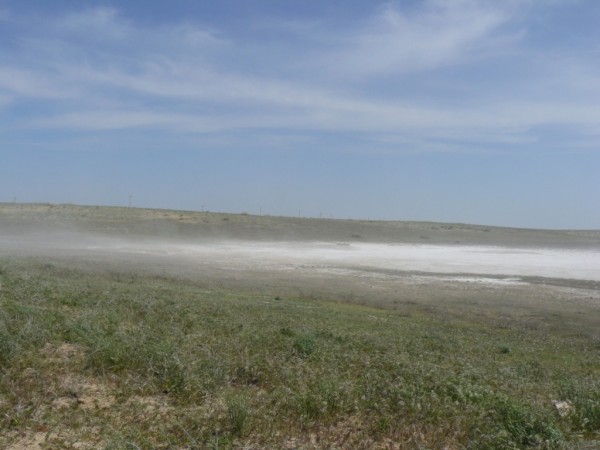
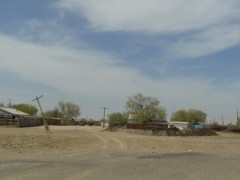
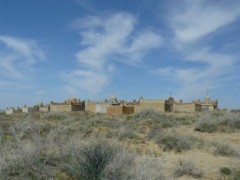
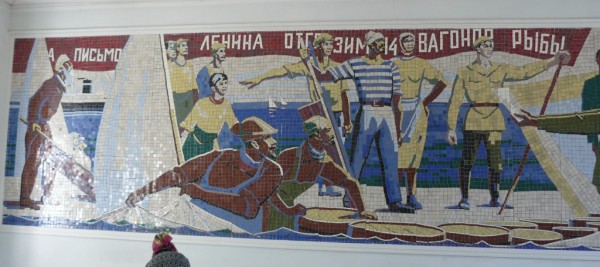
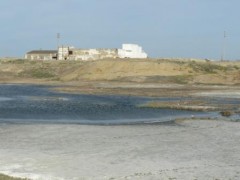
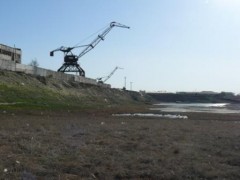

Wow! The author paints some painful images. I visited the site with the chldren’s paintings and nominated three; they were al so good it was hard to choose. I hope Jerry finds his roots.
Great piece of work !!
Barbara is right, one can almost see the bleak landscape as one reads the lines. Beautifully written! And the paintings were brilliant, hard to believe 11-14 years kids did it.
Thanks Andy for introducing us to Jerry Kubica and his work.
Thanks to Barbara and Smita (and RD) for your kind comments and also for taking the time to vote on Jerry’s site. It is an amazing story and if this small excerpt entices others to read the rest of it then I’m really pleased.